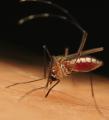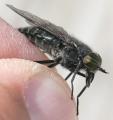Diptera.info :: Family forums :: Syrphidae
Who is here? 1 guest(s)
|
Sphegina verecunda in Norway
|
|
| Louis Boumans |
Posted on 14-07-2016 14:50
|
|
Member Location: NO Oslo Posts: 262 Joined: 09.06.04 |
Hi! I haven't looked at syrphids for some years, but when I found a Sphegina indoors in my home in Oslo, and I couldn't resist trying to identify it. With Mark van Veen's key, I arrive at Sphegina verecunda (female). Does anyone know whether this species has been reported from Norway before? According to the Norwegian species register (Artsnavnebasen) it isn't, but that can be outdated. |
|
|
|
| Sundew |
Posted on 16-07-2016 00:53
|
|
Member Location: Berlin and Baden-Württemberg, Germany Posts: 3917 Joined: 28.07.07 |
Sphegina is a very tricky genus! Ball & Morris (British hoverflies. 2013) write: "There are three very similar species: S. clunipes, S. elegans, and S. verecunda. S. elegans has rather yellow than dark humeri. ... Separating females of S. clunipes and S. verecunda is difficult and requires careful examination of the wing venation." S. elegans and S. clunipes are known to occur in Norway, S. verecunda isn't. I searched The World of Syrphidae (http://www.syrphi.../photo.php) that gives distribution maps for the species, and GBIF (http://www.gbif.o...SSUE=false) that cites only two observations from Sweden. The Hoverfly Recording Scheme (http://www.hoverf...a4c554c9c6) says about the biology of S. verecunda: "The larvae have been found in the exudates from a sap run on Ulmus. It is found in wet shady situations in woodland and carr. Adults are found in shade, or dappled sunshine, usually close to wet areas or streams, and are occasionally found visiting flowers." That doesn't sound like Oslo... If you caught the fly, you should consult a Syrphidae/Sphegina expert. Some literature is cited here: http://www.syrphi...d=Sphegina Regards, Sundew Edited by Sundew on 16-07-2016 00:54 |
|
|
|
| Louis Boumans |
Posted on 18-07-2016 01:25
|
|
Member Location: NO Oslo Posts: 262 Joined: 09.06.04 |
Thank you Sundew, I'll have a look at the litterature. I'll also check with the specimens in the museum in Oslo; they won't have verecunda but probably the other two species. And then identify an expert... Does anyone here happen to have a pdf copy of Doczkal, D. (1995): Bestimmungsschlüssel für die Weibchen der deutschen Sphegina-Arten (Diptera, Syrphidae) - Volucella ,Stuttgart 1(1), 3-19 ? Louis BTW: Oslo, though the county's capital, has very green and nature-like areas. I think some 10 or more species of stoneflies can be found in the municipality. Although I live 700m away from running water, I've found two stonefly species in my garden. |
|
|
|
| ValerioW |
Posted on 18-07-2016 06:49
|
|
Member Location: Padova - Italy Posts: 982 Joined: 01.06.12 |
Louis Boumans wrote: Hi! I haven't looked at syrphids for some years, but when I found a Sphegina indoors in my home in Oslo, and I couldn't resist trying to identify it. With Mark van Veen's key, I arrive at Sphegina verecunda (female). Does anyone know whether this species has been reported from Norway before? According to the Norwegian species register (Artsnavnebasen) it isn't, but that can be outdated. It's in Sweden (where it has been described with other 6 species; there're 16 european species), so, considering that there're not so great natural barriers (like mountains, oceans etc.) between Norway and Sweden I'm pretty sure it is already in Norway. Edited by ValerioW on 18-07-2016 06:51 |
|
|
|
| ValerioW |
Posted on 18-07-2016 07:02
|
|
Member Location: Padova - Italy Posts: 982 Joined: 01.06.12 |
Sundew wrote: Sphegina is a very tricky genus! Ball & Morris (British hoverflies. 2013) write: "There are three very similar species: S. clunipes, S. elegans, and S. verecunda. S. elegans has rather yellow than dark humeri. ... Separating females of S. clunipes and S. verecunda is difficult and requires careful examination of the wing venation." Separating verecunda from clunipes can also be possible with face's colour and tergite's length (theoretically no need to check wing's venation; in Sweden, so I guess in Norway too, there's not S. nigra). |
|
|
|
| RobertZ |
Posted on 18-07-2016 09:00
|
|
Member Location: Posts: 23 Joined: 17.01.16 |
If that's Norway lowland (not mountains) you have rather only 3 options: S. elegans, S.clunipes and S.clavata. I think you may have the latter which (females) is similar and in most cases mistaken with S. verecunda. Males of Sphegina can be identified by examining genitalia without any doubts. Revision of the material in Poland showed we have S. clavata lowlands (incl. Baltic Coast) and S. verecunda in higher mountains only (southern Poland). Robert. |
|
|
|
| Louis Boumans |
Posted on 19-07-2016 14:21
|
|
Member Location: NO Oslo Posts: 262 Joined: 09.06.04 |
Thanks so far; i went to Van Veen's key as follows: - sternum I not reduced, wider than long (excludes sibirica) - katepisternum dull - tibia 2 not expanded - female - tergite II longer than width of hind margin (excludes Sp. sphegina) - tergite V without membranous strips, mouth edge moderately protruding, gena small - postpronotum and humerus black (excludes elegans) - face black, tergite II less than 2.5 times as long as width of hind margin, fronts with bare stripe (excludes clunipes) - subcosta joining costa at r-m crossvein If it is not Sph. verecunda, it should be clunipes. My specimen does have a bit yellow at the lower mouth edge. Tergite I is about 2.1 times as long as the width of the hind margin, though. Frons seems to have (more) bare middle stripe if viewed at lateral angle, but seems all dusted in frontal view. So the question is: what does tergite II and face look like in clunipes? I attach some pictures. Maybe you can comment? Louis Boumans attached the following image: 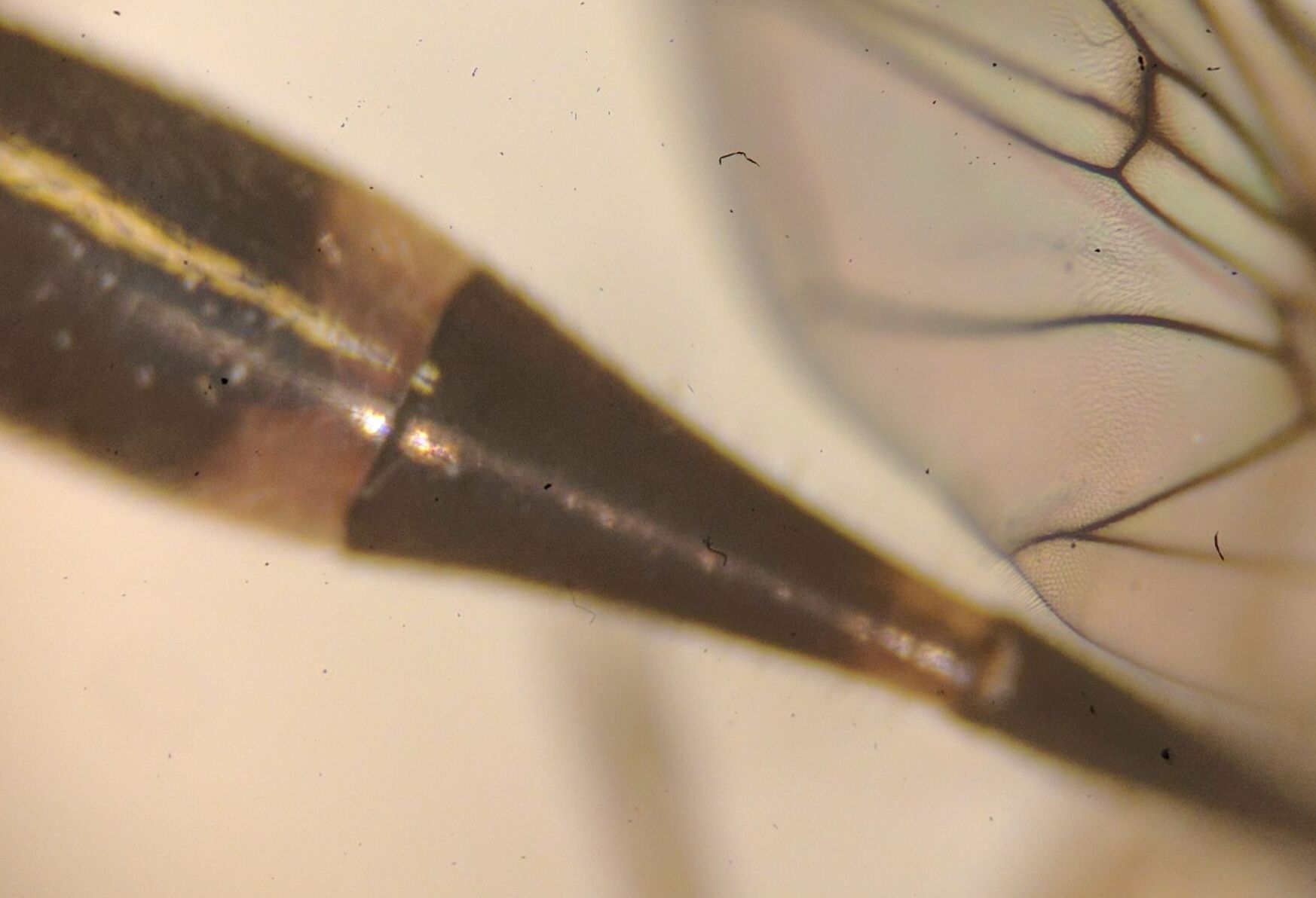 [145.94Kb] Edited by Louis Boumans on 19-07-2016 14:23 |
|
|
|
| Louis Boumans |
Posted on 19-07-2016 14:24
|
|
Member Location: NO Oslo Posts: 262 Joined: 09.06.04 |
face and humerus
Louis Boumans attached the following image: 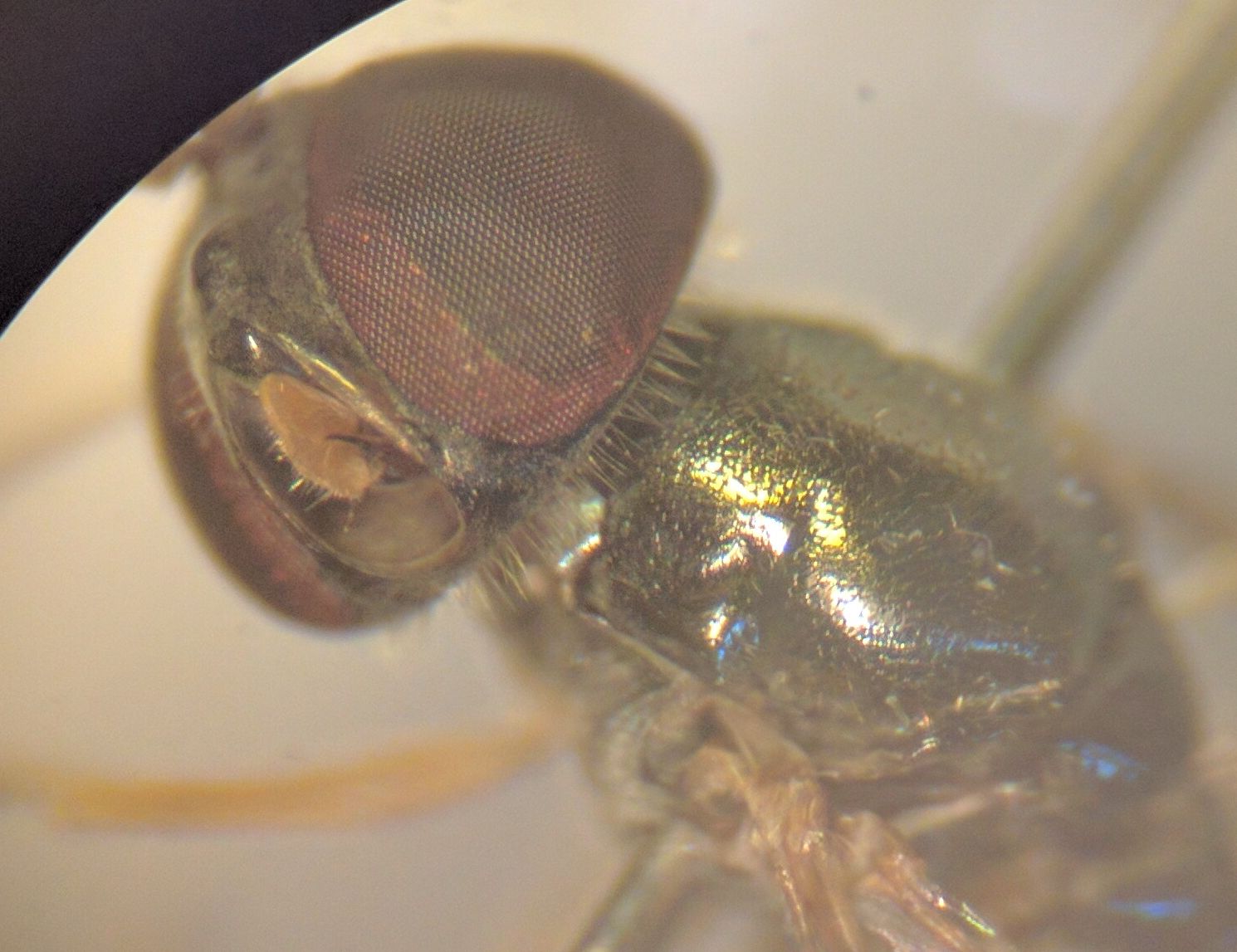 [170.75Kb] |
|
|
|
| Louis Boumans |
Posted on 19-07-2016 14:26
|
|
Member Location: NO Oslo Posts: 262 Joined: 09.06.04 |
The square sternite I looks clearly different from drawing of the sternite of clunipes in Van Veen's key,
Louis Boumans attached the following image:  [77.07Kb] |
|
|
|
| Louis Boumans |
Posted on 19-07-2016 14:27
|
|
Member Location: NO Oslo Posts: 262 Joined: 09.06.04 |
wing excludes clavata (which is also not known from Sweden/Norway)
Louis Boumans attached the following image: 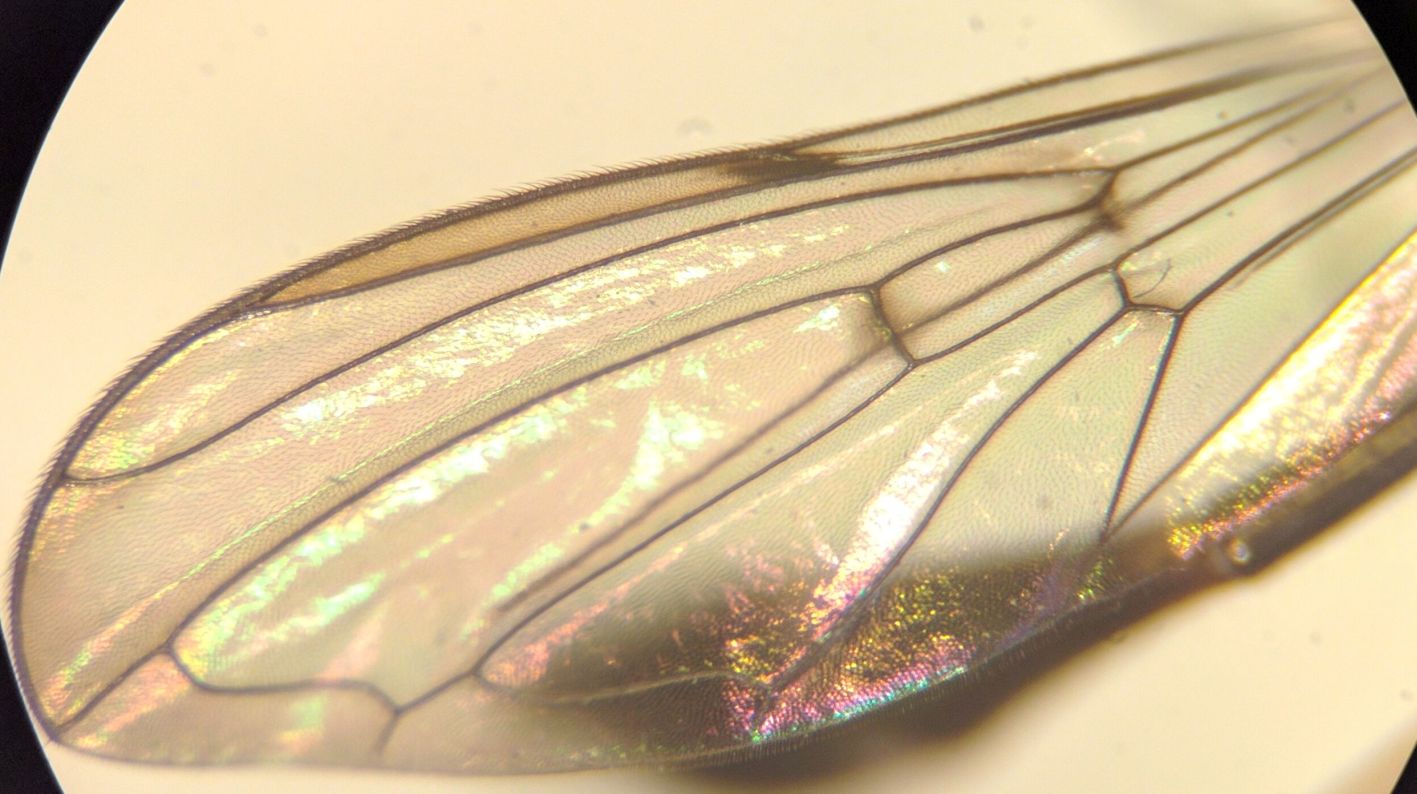 [141.69Kb] Edited by Louis Boumans on 19-07-2016 14:29 |
|
|
|
| Paul Beuk |
Posted on 19-07-2016 14:42
|
|
Super Administrator Location: Netherlands Posts: 19403 Joined: 11.05.04 |
Have you checked http://www.reposi...ment/45875? From the illustration in John's key I am inclined to think it might be elegans because of the long and narrow sternite II.
Edited by Paul Beuk on 19-07-2016 14:42 Paul - - - - Paul Beuk on https://diptera.info |
| RobertZ |
Posted on 19-07-2016 15:22
|
|
Member Location: Posts: 23 Joined: 17.01.16 |
Thanks for pictures. It is Baccha elongata. |
|
|
|
| Paul Beuk |
Posted on 19-07-2016 15:34
|
|
Super Administrator Location: Netherlands Posts: 19403 Joined: 11.05.04 |

Paul - - - - Paul Beuk on https://diptera.info |
| ValerioW |
Posted on 19-07-2016 15:40
|
|
Member Location: Padova - Italy Posts: 982 Joined: 01.06.12 |
RobertZ wrote: Thanks for pictures. It is Baccha elongata.  ...finally the photo shows M2 ...finally the photo shows M2 |
|
|
|
| ValerioW |
Posted on 19-07-2016 15:42
|
|
Member Location: Padova - Italy Posts: 982 Joined: 01.06.12 |
...BTW we can also say it is a female |
|
|
|
| Louis Boumans |
Posted on 20-07-2016 00:25
|
|
Member Location: NO Oslo Posts: 262 Joined: 09.06.04 |
Ooh so stupid of me! My only excuse is that I haven't looked at syrphids for years. And so I assumed it was Sphegina without checking! Sorry for the confusion and thanks Robert for pointing this out! |
|
|
|
| Jump to Forum: |




